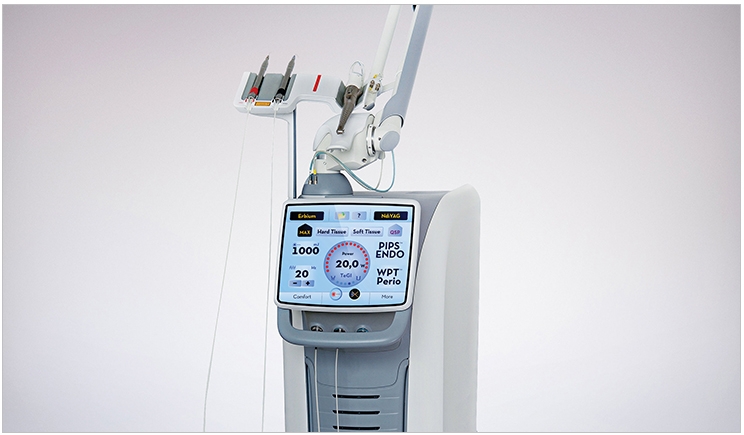
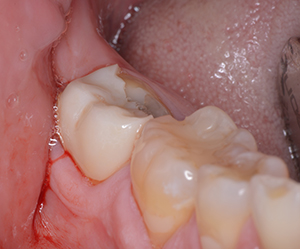 |
| Figure 1: A 50-year-old male patient presented with a fractured CAD/CAM Zirconia crown. |
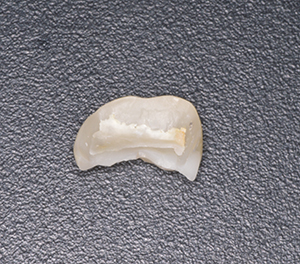 |
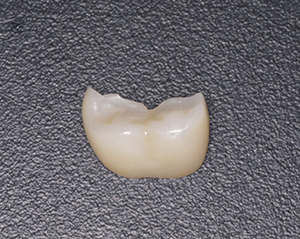 |
| Figure 2: The laser removed the crown No. 31 fragment in one piece. |
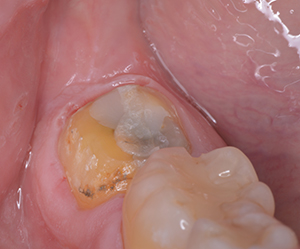 |
| Figure 3: The laser crown removal had no effect on the composite buildup or tooth structure. |
I am a dentist beginning my seventeenth year of using dental laser technology, which works by utilizing a beam of amplified light energy. The energy is produced in the laser’s resonator and directed into a fiber-optic system before moving to the tip of the laser handpiece and precisely onto the biologic tissue—all at the speed of light.
Different lasers operate at specific wavelengths of light with different effects on soft tissue, tooth enamel, dentin, and caries, as well as on restorations, cement, and ceramics. This contact creates a thermal interaction that has changed my everyday general dentistry operations.
A Representative Case
One of my 50-year-old male patients presented with a fractured CAD/CAM solid Zirconia crown (Figure 1). The BruxZir all-ceramic crown was placed 30 months before the fracture on tooth No. 31, and treatment was needed to replace it. The crown broke because of improper adjusting and finishing techniques and because of occlusal forces.
Tooth preparation was determined to allow more than 1.5 mm of occlusal clearance, with round line angles and no undercuts. My best option was to have this laboratory-made restoration remade under warranty. The lab that made the original crown had all of its information on file and saved, so it could make an exact copy.
I temporized the exposed dentin. I had the equipment and technique to remove ceramic crowns, but I decided to remove the rest of the crown and cement the replacement crown after the case came in. I can use my Erbium laser crown removal technique to remove the Zirconium restoration without damaging or altering the composite core buildup or tooth structure.
When it was time to remove the crown, I used the Fotona PowerLase AT Erbium: YAG (2940 nm). A cylindrical quartz tip (8 mm length/1 mm end diameter) in contact in the R14 handpiece or the non-contact R02 handpiece also can be used. I used the narrowest pulse width (50 µsec) with a 2/1 water-to-air mix. Settings were 3.0 W and 200 mJ at 15 Hz SSP.
I traced the complete external aspect of the crown in contact while firing the laser. Using only the laser, I started on the occlusal surface, slowly painting back and forth over all surfaces. Next I treated the buccal surface, back and forth and top to bottom, and then the lingual surface.
In less than a minute, the crown popped off (Figure 2). There was cement in the crown, and some remained bonded to the prepared tooth and core material (Figure 3).
I cleaned the remaining resin cement off tooth No. 31 with a 12-fluted finishing bur. The replacement crown was adjusted utilizing a high-speed diamond with copious water spray, and then I polished it. It’s easier to polish Zirconia in the lab than in the mouth.
I lightly micro-abraded the internal surface of the crown with 50 µm aluminum oxide, and then I cemented it with 3M ESPE Rely X Unicem (A2) resin cement. The permanent replacement was seen at 6 months with no problems present.
This technique for removing ceramic restorations utilizing an Erbium without damaging the crown or the underlying tooth structure is very predictable.
Conclusion
An Erbium laser can be used to remove ceramic and Zirconium restorations without damaging the restorations or the underlying tooth structure. I have placed hundreds more Lava, IPS e.max Press, IPS Empress Esthetic, Prismatik CZ, and BruxZir veneers, crowns, and bridges than I have had to remove. Now I have a tool to use in those infrequent circumstances.
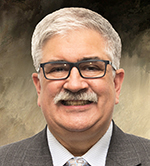 Dr. Jeffrey P. Cranska practices full-time laser and family dentistry in Severna Park, Md. He has an Advanced Proficiency Laser Certification from the Academy of Laser Dentistry and a Standard Proficiency and Training Certification from the Institute for Advanced Laser Dentistry (IALD). He can be reached at 410-975-9331 or familylaserdentistry@outlook.com. Dr. Cranska has no financial interest in any laser company but is compensated as a clinical consultant for presenting, lecturing, and training from the IALD, Millennium Dental Technologies, and Fotona LLC.
Dr. Jeffrey P. Cranska practices full-time laser and family dentistry in Severna Park, Md. He has an Advanced Proficiency Laser Certification from the Academy of Laser Dentistry and a Standard Proficiency and Training Certification from the Institute for Advanced Laser Dentistry (IALD). He can be reached at 410-975-9331 or familylaserdentistry@outlook.com. Dr. Cranska has no financial interest in any laser company but is compensated as a clinical consultant for presenting, lecturing, and training from the IALD, Millennium Dental Technologies, and Fotona LLC.
Related Articles
Use of Lasers to Treat Failing Dental Implants
Laser Removal of All-Ceramic Restorations: Solving a Difficult Clinical Challenge
Laser Dentistry Requires Bright Practice Management











